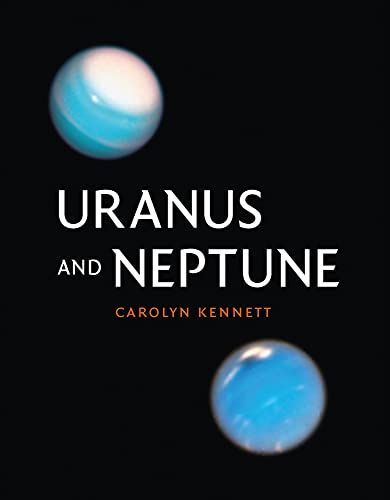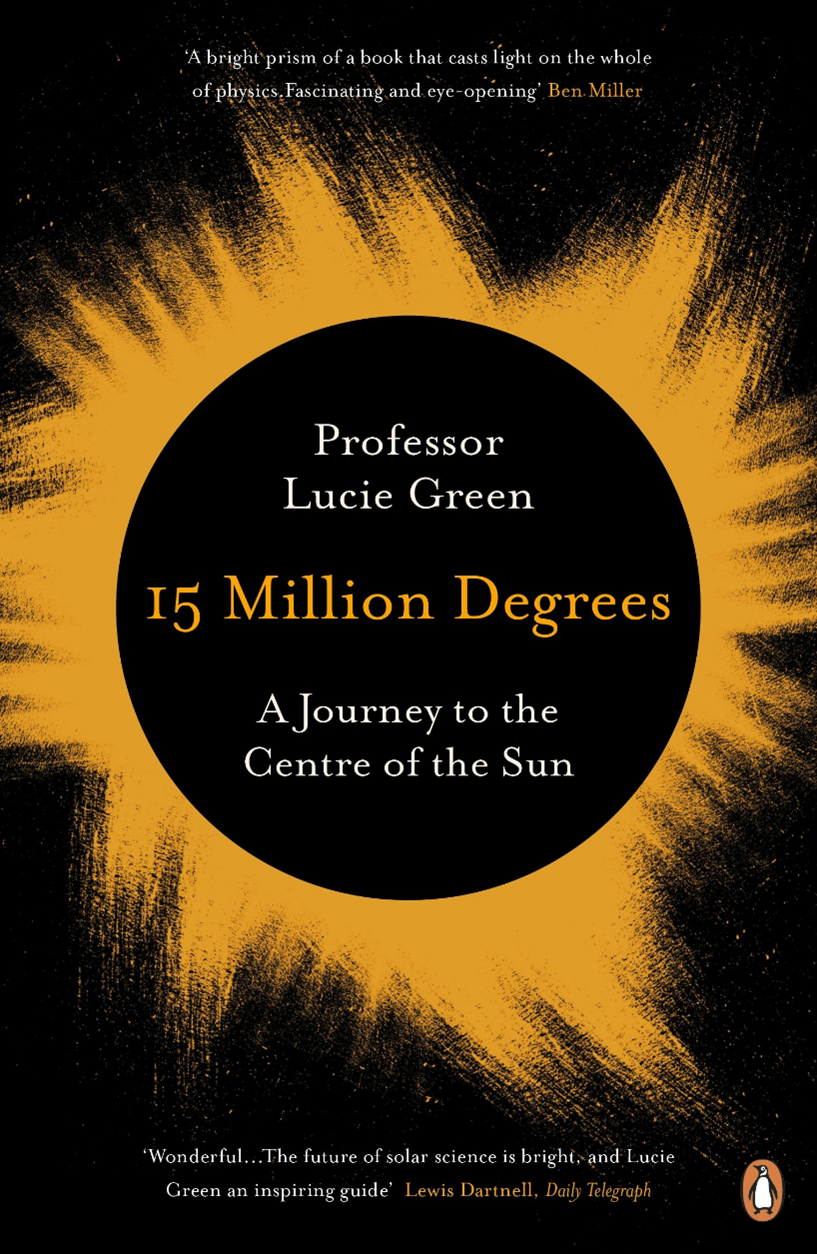HAS Book Reviews

Carolyn Kennett, Uranus and Neptune. Reaktion Books, October 2022
Hardback £20.00 (May 2023) on Amazon
Rating: 4.5/5
The Ice Giants Uranus and Neptune have received comparatively little attention compared with the rest of the Solar System, due in part to their remoteness. and in part to being visited by just one spacecraft, Voyager 2. This book is therefore especially welcome in that it summarises our current knowledge of both planets in a clear and accessible way. The book deals with the two planets separately and in the same overall manner. First there is an account of their discovery and pre-discovery observations, followed by the results of the Voyager 2 encounters. Observations and discoveries since Voyager 2 follow and for each planet there is a final section dealing with its moons. A final short chapter covers observation and photography, both now within reach of many amateurs with suitable equipment. Appendices give data for the planets, their rings and their moons plus information on future oppositions.
The book has over a hundred illustrations, many in colour, and the text is non-technical and accessible to the average reader. The chapters on post-Voyager observations are especially valuable summaries of work that would otherwise be difficult to access conveniently. Some of these observations date from as recently as 2021. Many exoplanets have now been discovered that are similar in size to the Ice Giants and these are covered in the section of the book about Neptune. The existence of such exoplanets suggests that much still needs to be discovered about Uranus and Neptune and how they relate to ice giants elsewhere. Future missions to both are therefore important and some possible ones are mentioned. The way in which the book is structured does mean that comparisons between the two planets are not always easy to find. However, this is a minor quibble in an otherwise excellent description of these two remote and fascinating worlds.
John Sweeney
David Love, Kepler and the Universe: How One Man Revolutionized Astronomy.
Prometheus, December 2015. Hardback £7.91 (May 2023) on Amazon
A very insightful book into Johannes Kepler's personality and the struggles of 16th/17th century life. The book portrays Johannes Kepler as a downtrodden but very determined man; almost to the cost of his own reputation. There is also a good account of his struggle with the Lutheran faith and his fascination with astrology.
Johannes Kepler used Tycho Brahe's precision measurements of the planets to prove the sun is at the centre of our solar system and develop the laws we are familiar with today. During his quest to prove Nicolaus Copernicus' theory, he had to put his work to one side as he had to defend his mother from being prosecuted as a witch. I think whether you are new to astronomy or a weathered astronomer you will find this book a highly readable piece of important history in our understanding of the solar system.


Lucie Green, 15 Million Degrees: A Journey to the Centre of the Sun.
Penguin, March 2016. Paperback £7.69 (May 2023) on Amazon
This book gives a clear, up to date description of our star and our solar system, which is why I think any amateur astronomer should include this book in their own collection. This is a must-read for anyone who is interested in how the sun works from nuclear fusion to protection of the solar system. Dr Lucie Green also teaches you the history of how we gained our knowledge and explains the basics before jumping into too deep information.
Brian Jones (ed.), Yearbook of Astronomy 2021. White Owl, October 2020
Paperback £17.59 (May 2023) on Amazon
The “Yearbook of Astronomy” was started in 1962 by John Guy Porter, who presented the “Night Sky” on radio which predated “The Sky at Night” on TV (his programme was the last thing my mother heard before going into hospital to give birth to me). He was assisted by Patrick Moore who soon took over as editor. The Yearbook survived the death of Patrick Moore in December 2012, but was suddenly dropped by Macmillan in 2017. Brian Jones and Richard Pearson produced an “emergency” edition in 2017 funded by a small group of subscribers.
Given a new berth by the publishers Pen and Sword, the Yearbook is now back to its usual size. It
consists of three sections: monthly notes, an article section and a back section which covers variable stars, double stars, deep-sky objects and astronomical organisations. The monthly section has all the details one would expect in such a section (planets and such like), but each month also has an article attached. This is a departure from the older version and while the articles are often interesting I find them a distraction – they should be in the article section and the monthly notes should be longer. I also find it disappointing that the list of double stars has been reduced from five pages to just over a page. Given the increasing interest in imaging by amateur astronomers, it is a pity that there is little for imagers in the volume. However, the Yearbook remains a useful tool for visual observers and also provides interesting reading for cloudy nights.


Ian Stewart, Calculating the Cosmos: How Mathematics Unveils the Universe. Profile Books, August 2017 Paperback £10.79 (May 2023) on Amazon
While I’m a keen pursuant of the underpinning science of our hobby, I’m certainly no ‘mathematician’. Ian Stewart on the other hand, IS an accomplished mathematician, science writer, presenter and recipient of the Michael Faraday Prize and Christopher Zeeman Medal. So it was with some trepidation that I picked up ‘Calculating the Cosmos: How Mathematics Unveils the Universe’.
A quick flick through the 300 or so pages reveals almost no ‘equations’ as such. So for those looking for a comprehensive textbook of the mathematical equations which steer the Universe through its life - this isn’t it. Instead, the author includes many diagrams and graphs which illustrate the principles being discussed and these are well described in the text. The aim of the book is to impart a general understanding of how the behaviour of the observed universe is defined and embodied in the underlying physics and mathematical principles without burdening the reader with what would undoubtedly be some formidable math.
However, while the author spares us the detail of the mathematics, he does not limit the scope of the book in terms of its coverage of the evolution of the universe. The book starts with a quick review of the history of our understanding of gravity - Kepler, Newton, Einstein et al. - uses these to illustrate how the principles are embodied in star and solar system formation. He piles in the detail of how we have arrived at the current distribution of planets in our solar system and then goes up a gear to look at the dynamic behaviour of the asteroids and how Lagrangian mechanics results in the behaviour of the Greek and Trojan asteroids. He uses this as a springboard to go on to discuss how orbital mechanics governs everything in our solar system from the motion of the planets, their moons and how we employ these to more efficiently boost the trajectories of man-made objects to the outer planets.
The book progresses with a brief discussion of stellar formation, the behaviour of the Cepheid variables and their importance as ‘standard candles’ in contributing to interstellar distance measurement. The author has a brief dalliance with our own galaxy, galaxy formation in general and also of the hunt for exoplanets, examining the mathematical tools employed in these areas. From here on things become very much more ‘cosmological’ as the author looks at black holes and their theoretical properties. He also embarks on discussion of the various theories of the formation of the universe - creation from nothing, its early life and subsequent expansion to our vision of it today. Inevitably he goes on to discuss the ‘missing mass’ conundrum, dark matter and dark energy.
But there is a notable divide in this book. To anyone who has studied at least some basic astronomy theory, the subject matter of the first two thirds feels comfortably solid and believable. But it’s in this last third of the book that things start to feel unnervingly ‘fluid’. The author describes multiple theories for how things like the structure of the universe might be explained by a variety of emerging theories in particle physics and quantum mechanics. Similarly you know you are in trouble when the book concludes with a discussion of ‘multiverses’, of which Ian Stewart points out that ‘mathematical physicist, Brian Greene describes nine different types of multiverse’ of which the author goes on to discuss just four. And it’s at that point, I for one, invoke the old adage that while there are several theories for how something works, you cant draw any conclusions as to which one (if any) is right. Notwithstanding this inevitably squishy ending, the book was an enjoyable read.
John Neal